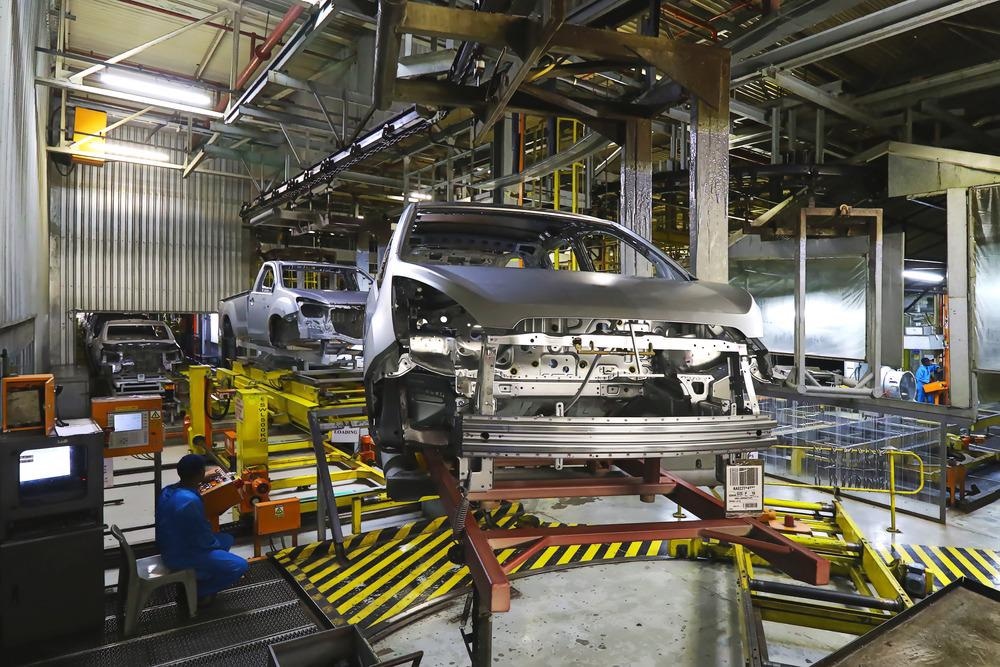Signed in 2016, The Paris Climate Agreement aims to usher in a carbon-neutral society by 2050. Greenhouse gas emissions released from vehicles play a significant role in achieving the overarching goal of the agreement.

Image credit: Leonard Hugo/shutterstock.com
As it stands, cars contribute 12% CO2 emissions to the total EU emissions. The global challenge requires strict guidelines on vehicle CO2 emissions. From 2021 onwards, the new average target emission will be reduced from 130 g CO2/km to 95 g CO2/km across the entire EU.1
Leading economies, including the UK, intend to ban all polluting vehicles by 2035, and Germany aims to reduce greenhouse gas emissions by 95% by 2050.2, 3
The Age of Electric Vehicles
Electric cars offer much promise in helping meet such targets because, in comparison to traditional cars powered by internal combustion engines, electric vehicles have a considerably lower carbon footprint.
This has kick-started the electric vehicle revolution as an increasing number of road users begin to shift towards purchasing electric cars in line with the government’s climate-friendly measures. The leading auto manufacturers are making significant progress in the electrification of vehicles.
The annual sales of electric cars have soared to over two million per annum from just a few thousand in 2010, with a projected sales figure of 31 million by 2030.2
However, a recent study by Deloitte reports that there are still concerns amongst consumers regarding battery-powered electric vehicles: questions that mostly revolve around the price, drive-range per charge and charging time.2
Electric cars tend to carry expensive batteries, which means a lack of general affordability resulting in the continued dominance of petrol and diesel-powered in the global market. Additionally, the large batteries found in electric cars tend to require prolonged charging times.
Performance studies have shown that electric cars with heavy batteries and high capacities also have greater energy consumption per km.4
Additionally, the driving range is directly proportional to the battery capacity/vehicle weight (kWh/kg). Therefore, for a better drive range, today’s electric vehicles contain large battery packs, which makes them heavy.
Simulation studies performed at the German Aerospace Centre demonstrate that a reduction in an electric vehicle’s weight by 100 kg improves efficiency by around 3.6%. Therefore, to compensate for heavy batteries, manufacturing lightweight vehicles is an excellent alternative that can enhance energy efficiency.5, 6, & 7
An investigation led by the European Aluminum Association shows that an electric VW Golf constructed with aluminum is up to 187 kg than steel, while also generating an overall cost saving of 635 euros as a smaller battery pack can be installed.5
Aluminum – Making Electric Cars Safer and Efficient
Due to the fact aluminum is three times less dense than steel, high performance aluminum alloys are a good alternative to heavy steel parts. However, replacing parts with aluminum requires the thickness of the aluminum to be 50% greater than that of steel.
Aluminum has been used in the manufacture of modern cars since the early seventies. Today, there is on average 150 kg of aluminum in each vehicle made in Europe, with aluminum alloys frequently used in the manufacturing of the body-in-white, chassis, suspension and wheels.
Tesla uses a skateboard design for the extruded aluminum frame of its battery pack in order to enhance the robustness of its vehicles.
Influenced by Tesla’s aluminum extrusion-intensive skateboard design, major OEMs, including Audi, BMW, Nissan and Porsche, are now making the switch from steel to aluminum in the design of lightweight battery enclosures for electric cars.
How Safe are Aluminum Cars?
The braking distance of electric cars is reduced when making them lighter, which in turn lighter improves passenger safety and enhances the ease of handling. Aluminum has twice the capacity of steel when absorbing energy in a collision.
In comparison to steel components, the 50% extra thickness of aluminum components means an increase in material stiffness and, therefore, the overall rigidity of the vehicle.
According to a life cycle analysis that compares full-steel to full-aluminum electric vehicles, the carbon emissions of the aluminum vehicle are 1.5 tons lower than the steel-based car across its lifetime.
Aluminum also has the benefit of not having to reduce the vehicle size to attain a lightweight structure. It is vital from a safety perspective since the interior of a smaller vehicle has less survival and crush space during an accident.
These advantages outline the urgency necessary to develop lightweight, robust aluminum alloys for electric vehicles. The chemical composition and homogeneity of alloys directly impact their microstructure.
A careful selection of an aluminum alloy, specific to the application, with the just-right chemical composition is necessary to ensure that it has the required characteristics, such as optimum stiffness, ease of formability, thermodynamic and mechanical properties.
For example, the heat exchangers and battery enclosures must offer high thermal conductivity to maintain a cool temperature in electric cars.
Making Cars More Environmentally Friendly with Aluminum
Since aluminum is 95% recyclable, a considerable amount of aluminum from a used car can be recycled to make a new car: a feature that significantly reduces the indirect lifetime CO2 emissions. Consequently, recycling 1 kg of aluminum saves 17 kg of CO2 emissions in the vehicle’s life-cycle when compared to steel.
Considering the sales figures of electric vehicles are projected at around 30 million electric vehicles by 2030, the environmental impact would be massive. This would be equal to a reduction of 70 million tons per year in CO2 emissions from vehicle production.
The fewer batteries needed to power a lighter car would also yield a lower industrial carbon footprint associated with battery manufacturing.
Leading aluminum producers such as Hydro have even begun incorporating renewable energy sources to manufacture low carbon aluminum for automotive applications.8
The Need for Certified Reference Materials
CRMs are utilized for instrument and method calibration, benchmarking analytical measurements and homogeneity of alloys, and quality assurance.9 ARMI’s CRMs offer a precise reference point for the 6000- and 7000-series, the most commonly used aluminum alloys in electric vehicles.
The extruded crash management systems based on these alloys must demonstrate exceptional crash deformation behavior, i.e., they must withstand extreme deformations before cracks begin to form.
CRMs facilitate appropriate benchmarking, including mechanical properties such as creep and impact toughness, where the latter is a key factor in establishing a certain degree of passenger safety in the event of a crash.10
ARMI makes sure that analysis can be relied upon for complex, multicomponent aluminum alloys, utilizing a direct-chill continuous casting process that offers exceptional homogeneity.11
Each sample is analyzed utilizing two varying, state-of-the-art analytical techniques such as colorimetry, fluorimetry, X-ray fluorescence and optical emission spectrometry.
The resulting values are cross-referenced against the results from external laboratories. This absolute validation framework guarantees results that can be trusted while ensuring consumer safety.
References
- Climate Action, European Commission. Available at: https://climate.ec.europa.eu/eu-action/transport_en
- Deloitte Insights, Electric vehicles Setting a course for 2030. Available at:
https://www2.deloitte.com/content/dam/insights/us/articles/22869-electric-vehicles/DI_Electric-Vehicles.pdf
- Climate Action Plan 2050, German Federal Ministry. Available at: https://www.bmu.de/fileadmin/Daten_BMU/Pools/Broschueren/klimaschutzplan_2050_en_bf.pdf
- Berjoza, D. et al, Agronomy Research, 15(S1) 952-963, (2017)
- Jung, H. et al, World Electric Vehicle Journal, 9(46), (2018)
- https://www.automotiveworld.com/articles/electric-vehicles-the-now-the-near-future-and-the-never-again/
- https://european-aluminium.eu/
- https://www.hydro.com/en
- https://commission.europa.eu/index_en
- https://www.shapesbyhydro.com/en/material-science/why-carmakers-need-new-aluminium-alloys/
- https://www.armi.com/rio-tinto-alcan-cr

This information has been sourced, reviewed and adapted from materials provided by LGC Limited.
For more information on this source, please visit LGC Limited.